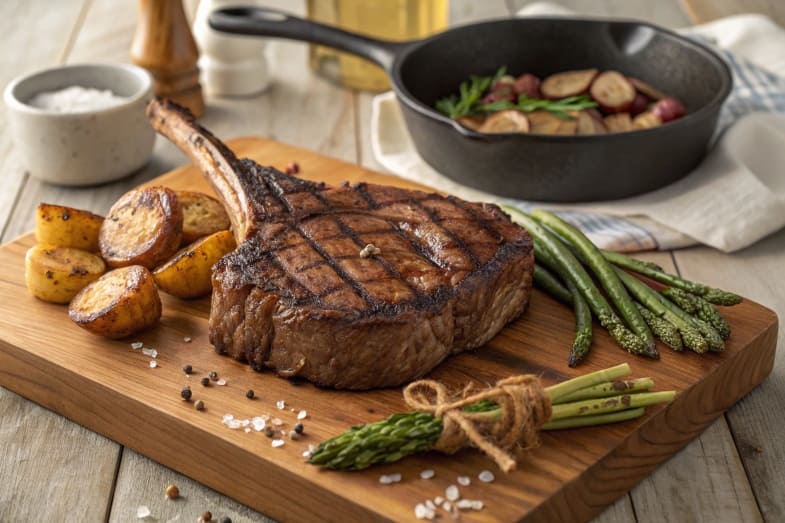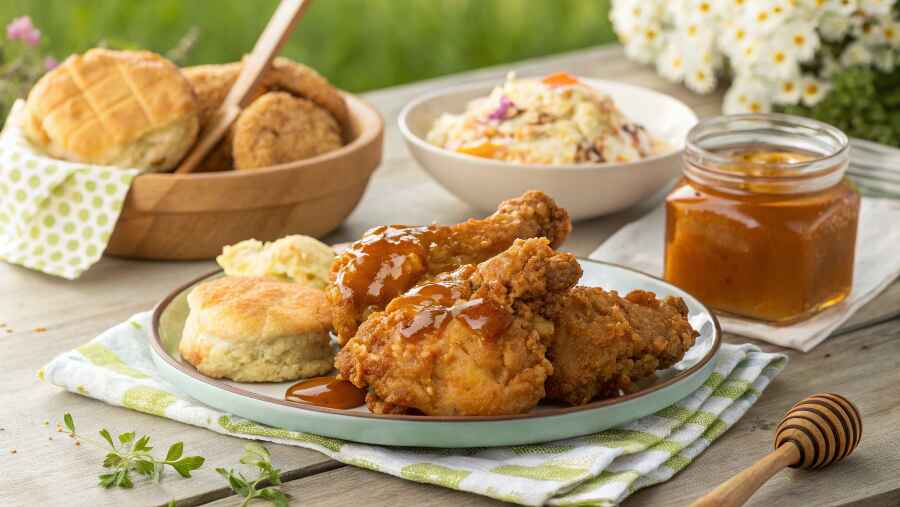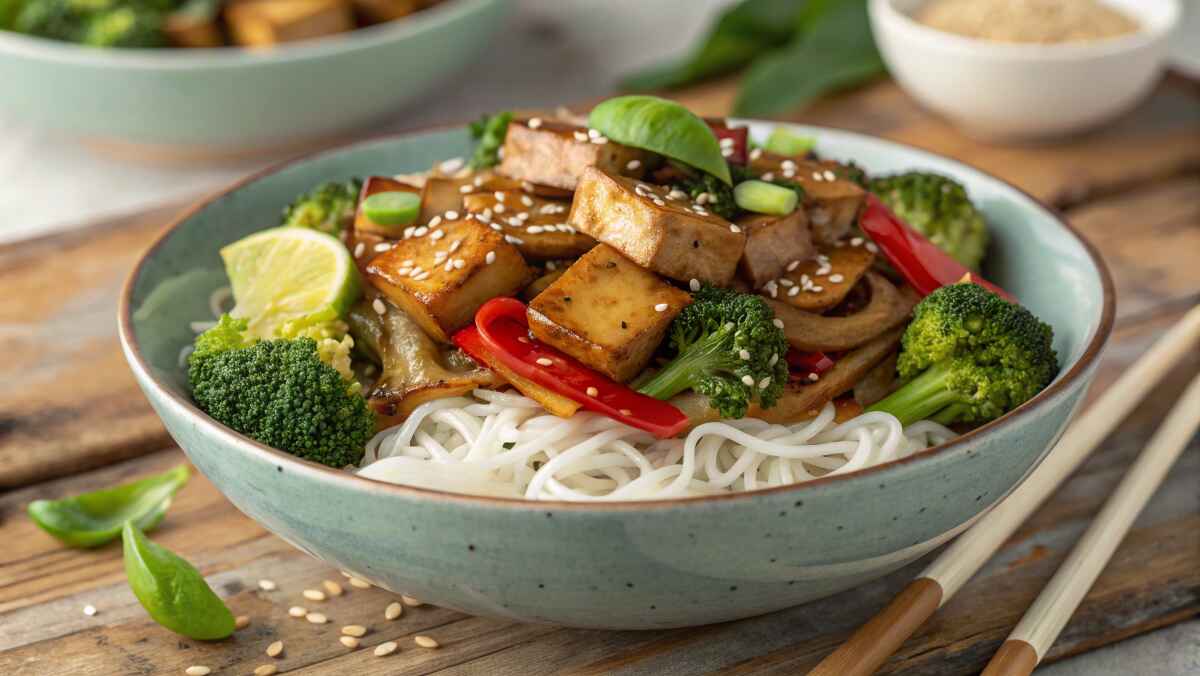How much does a Cowboy Steak weigh? This is a common question among steak enthusiasts who are drawn to this bold, bone-in cut known for its impressive size, rich marbling, and intense beefy flavor. Unlike standard ribeye steaks, the Cowboy Steak is thicker and includes a portion of the rib bone, which adds to its overall weight and enhances both presentation and taste.
On average, Cowboy Steaks typically weigh between 16 and 32 ounces, making them a hearty and flavorful choice for those who love a premium, steakhouse-style experience. Some butchers even offer larger cuts, with extra-thick steaks reaching up to 40 ounces for those looking for an indulgent feast.
In this guide, we’ll dive into the factors that influence Cowboy Steak weight, how to choose the right size for your meal, and essential cooking tips to ensure you get the most out of this iconic cut. Whether you’re grilling, searing, or slow-cooking, understanding the weight of a Cowboy Steak will help you prepare it to perfection and impress your guests with a steak that truly stands out.
Typical Weight of a Cowboy Steak
A Cowboy Steak typically weighs between 16 and 32 ounces (1 to 2 pounds), including the bone. The exact weight depends on several factors:
- The Thickness of the Cut:
Most Cowboy Steaks are cut between 1.5 and 2 inches thick, making them larger and heavier than standard ribeye steaks. Thick cuts are essential for achieving the perfect balance of a tender interior and a seared crust. - Bone-In Nature:
The rib bone, trimmed to about 5 inches, accounts for part of the weight. Beyond its weight contribution, the bone also enhances the steak’s flavor and provides a dramatic presentation. To explore more about bone-in versus boneless cuts, check out this ribeye steak guide. - Marbling and Fat Content:
The rich marbling and fat content contribute to both the weight and the tenderness of the steak. Marbling ensures a juicy texture and boosts the steak’s overall flavor profile.
For Comparison:
- Boneless Ribeye: Typically weighs between 10 and 16 ounces, making it smaller and quicker to cook than a Cowboy Steak.
- Tomahawk Steak: Another bone-in ribeye cut, but with a longer rib bone. These steaks are larger and heavier, often weighing 32 to 48 ounces. Learn more about similar cuts in this comprehensive steak guide.
Why Does the Weight Matter?
The weight of a Cowboy Steak is more than just a number—it plays a pivotal role in how the steak is cooked, served, and presented. The hefty nature of this bone-in ribeye cut makes it unique and highly desirable among steak enthusiasts. Here’s a deeper dive into why weight matters:
1. Cooking Time
The weight of a Cowboy Steak significantly affects the time and method required to cook it properly.
- Thicker and Heavier Cuts:
Cowboy Steaks, often weighing between 16 and 32 ounces, are thicker than most standard steak cuts. The bone-in structure adds to the cooking challenge by acting as an insulator, meaning the meat around the bone cooks more slowly than the rest of the steak. This makes even cooking a priority. - Optimal Cooking Techniques by Weight:
- For lighter cuts (16-20 ounces): Quick cooking methods like grilling or pan-searing are sufficient, as these steaks can achieve the perfect balance of a crusty exterior and a tender interior within a shorter timeframe.
- For heavier cuts (24-32 ounces): Slower methods like reverse searing or smoking are ideal. These approaches allow the steak to cook evenly without overcooking the outer layers while still achieving the desired internal temperature.
For detailed tips on grilling and searing techniques, check out this guide to preparing large cuts of meat.
2. Serving Size
The weight of a Cowboy Steak determines how many people it can serve and how it fits into your dining plans.
- Individual Serving:
A 16-ounce Cowboy Steak, equivalent to 1 pound, is a generous portion for one person. This size is perfect for steak enthusiasts who prefer a hearty, protein-packed meal. - Sharing Portions:
Larger cuts, such as those weighing 24 to 32 ounces (1.5 to 2 pounds), are ideal for sharing between two people. This makes the Cowboy Steak a versatile choice for romantic dinners, family meals, or celebratory occasions where sharing is part of the experience. - Dietary Considerations:
The portion size also ties into dietary planning. For instance, a 16-ounce steak provides around 70-80 grams of protein, making it a substantial meal for individuals with high-protein diets. Larger cuts can be divided into smaller servings, catering to those looking to moderate portion sizes while still enjoying the rich flavor of the Cowboy Steak.
3. Presentation
The impressive weight of a Cowboy Steak plays a crucial role in its visual appeal and ability to captivate at the dinner table.
- Rustic Elegance:
The combination of its weight, thickness, and bone-in structure creates an iconic, rustic aesthetic. The substantial size of the steak, paired with its golden sear and the dramatic protrusion of the rib bone, makes it a centerpiece that commands attention. - Impress Your Guests:
Heavier Cowboy Steaks (24-32 ounces) elevate the presentation, making them ideal for celebrations or gatherings where the steak becomes the star of the meal. Placed on a wooden serving board with accompaniments like roasted vegetables or potatoes, the Cowboy Steak’s robust appearance creates a “wow” factor that leaves a lasting impression. - Steakhouse Quality at Home:
The weight and presentation of a Cowboy Steak replicate the premium experience you’d find at a high-end steakhouse. When served at home, it brings a sense of indulgence and luxury to your table.
How to Choose the Right Weight
For Individual Dining
If you’re planning a steak night for one, opt for a Cowboy Steak weighing 16 to 20 ounces. This size provides plenty of meat while still being manageable to cook evenly.
For Sharing
For two people or a special occasion, choose a larger cut weighing 24 to 32 ounces. The substantial size is perfect for sharing and allows you to showcase the steak’s impressive presentation.
For Cooking Methods
- Grilling: Lighter Cowboy Steaks (16-24 ounces) cook faster and are ideal for high-heat grilling.
- Reverse Searing or Smoking: Heavier Cowboy Steaks (24-32 ounces) benefit from slower cooking methods to ensure even doneness.
Factors That Affect the Weight of a Cowboy Steak
1. The Bone
The rib bone left intact in Cowboy Steaks accounts for approximately 20-25% of the total weight. While the bone is not edible, it enhances the flavor of the meat during cooking and contributes to the steak’s dramatic presentation.
2. Grade of Beef
Higher-grade beef, such as USDA Prime, often weighs slightly more due to its superior marbling and fat content. The fat enhances flavor and adds to the steak’s overall heft.
3. Thickness of the Cut
Butchers typically cut Cowboy Steaks thicker than standard ribeye steaks, contributing to their significant weight. Thickness ensures a juicy interior and allows for a perfect crust when seared.
4. Grass-Fed vs. Grain-Fed Beef
- Grass-Fed Beef: Tends to be leaner and slightly lighter.
- Grain-Fed Beef: Has more marbling and fat, resulting in a heavier cut.
How to Weigh and Cook Cowboy Steak
Weighing Your Steak
If you’re unsure of your steak’s weight, you can use a kitchen scale. For accurate measurements:
- Weigh the steak before cooking to account for bone and fat.
- Note that cooking will reduce the weight slightly due to water loss and fat rendering.
Cooking Tips by Weight
- 16-20 Ounces: Cook on high heat for a quick sear and finish over indirect heat. These are ideal for grilling or pan-searing.
- 24-32 Ounces: Use reverse searing or smoking techniques to ensure even cooking. These larger steaks benefit from slower methods to achieve the perfect crust without overcooking the interior.
For more tips on cooking large bone-in cuts, explore our guide to steak preparation.
FAQs About Cowboy Steak Weight
1. Why is a Cowboy Steak heavier than a standard ribeye?
The Cowboy Steak is thicker and bone-in, which naturally increases its weight compared to a boneless ribeye. The extra thickness allows for a juicier, more flavorful steak, while the bone enhances moisture retention and adds to the overall weight.
2. How much of a Cowboy Steak is edible meat?
Approximately 75-80% of the total weight of a Cowboy Steak consists of edible meat, with the remaining weight attributed to the bone and fat. The bone-in structure contributes to the steak’s signature taste while also making it more visually striking.
3. Can I find smaller Cowboy Steaks?
Yes, some butchers offer smaller Cowboy Steaks in the 12-14 ounce range, but these are less common. The traditional Cowboy Steak is known for its impressive size, and smaller cuts may not provide the same bold experience or ideal meat-to-bone ratio that defines this steak.
4. Is the weight listed before or after cooking?
The listed weight of a Cowboy Steak is always before cooking. As the steak cooks, fat renders and moisture is lost, which slightly reduces its final weight. A 32-ounce steak may end up closer to 28 ounces after cooking, depending on the preparation method.
5. How much does a Cowboy Steak cost by weight?
Cowboy Steaks typically range from $15 to $25 per pound, depending on:
- The grade of beef (Choice, Prime, or Wagyu).
- Whether the steak is grass-fed or grain-fed.
- The source and reputation of the butcher or steakhouse.
For a premium steakhouse-quality experience, investing in a high-quality Cowboy Steak ensures a rich, flavorful, and satisfying meal that’s worth every bite!
🥩 The Weight and Appeal of a Cowboy Steak
The weight of a Cowboy Steak—ranging from 16 to 32 ounces—adds to its impressive appeal. Its substantial thickness and bone-in structure create a steak that’s not only visually striking but also deeply flavorful, juicy, and satisfying. This hefty cut is designed for those who appreciate bold, steakhouse-quality dining and want an unforgettable eating experience.
Because of its size and marbling, cooking a Cowboy Steak requires careful preparation to ensure even cooking and maximum flavor development. Whether you’re a grill master aiming for the perfect sear, a home cook using a cast-iron skillet for a deep crust, or a steak lover opting for the reverse-sear method, understanding the weight and its impact on cooking is key to achieving steak perfection. If you’re curious about how Cowboy Steak compares to Ribeye, check out this guide on whether Cowboy Steak is a Ribeye.
A Cowboy Steak can be a solo indulgence for those with a serious appetite or a centerpiece for sharing, making it perfect for special occasions, weekend cookouts, or an elevated steak night at home. If you’re watching your caloric intake, you might be interested in learning how many calories are in 4 oz of cooked skirt steak—an alternative cut with a leaner profile but still packed with flavor.
Of course, no steak dinner is complete without a delicious side dish! If you love pairing sweet and savory flavors, why not serve your perfectly cooked Cowboy Steak with a side of small pancakes? Their light, fluffy texture contrasts beautifully with the rich, buttery steak, making for a unique and satisfying meal.
So, grab a thick Cowboy Steak, fire up the grill, and experience the unmatched flavor of this legendary cut. Savor every bite and enjoy the true essence of premium steak! 🥩🔥




